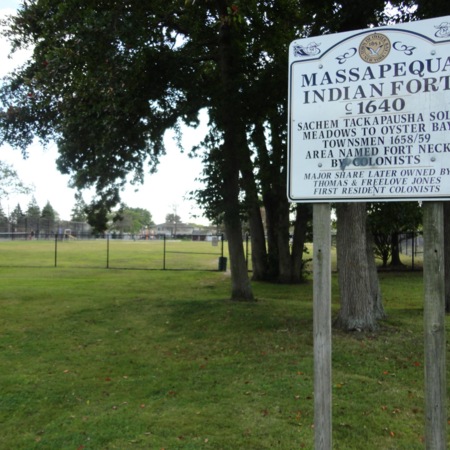In March 1656, about six months after the Indian attack on New Amsterdam, Director General Stuyvesant entered into a peace agreement with the Massapequa Indians, represented by sachem Tackpausha. No further documentary records exist of Fort Massapeag until 13 July 1696, when “ye Indians Land upon Massipeague or ffort Neck at ye south of Oysterbay,” and “ye Old ffort” at “ye Head of ye Meadows on sd. Neck” are mentioned in a deed. A year later the Indian lands here were sold. Excavations conducted in 1934-1935 uncovered various objects and shell middens, suggesting wampum was produced at the location. Further excavations by Ralph S. Solecki revealed “EB” white clay pipe stems, brass mouth harps, copper arrow points, glazed stoneware sherds and other objects that suggest Fort Massapeag confirm dominantly a Contact Period Native American site. No artifacts postdating 1700 were found, suggesting that, consistent with the deed of sale, the site was abandoned after the land was sold in 1697. When the site was designated a National Historic Landmark in 1993, the Statement of Significance indicated that “The fort’s size, shape, and method of construction suggests the fortified trading post and frontier refuge was ordered built by Dutch authorities in 1656.” This suggestion is based on findings by Solecki (see under ‘documentation’) s, especially on its style (“earthworks quadrangular with two corner bastions [..], surrounded by a six-foot-wide ditch,” size (“only one hundred feet to a side”), and location (low ground, easy access to coastal traffic, entrance facing shore).
